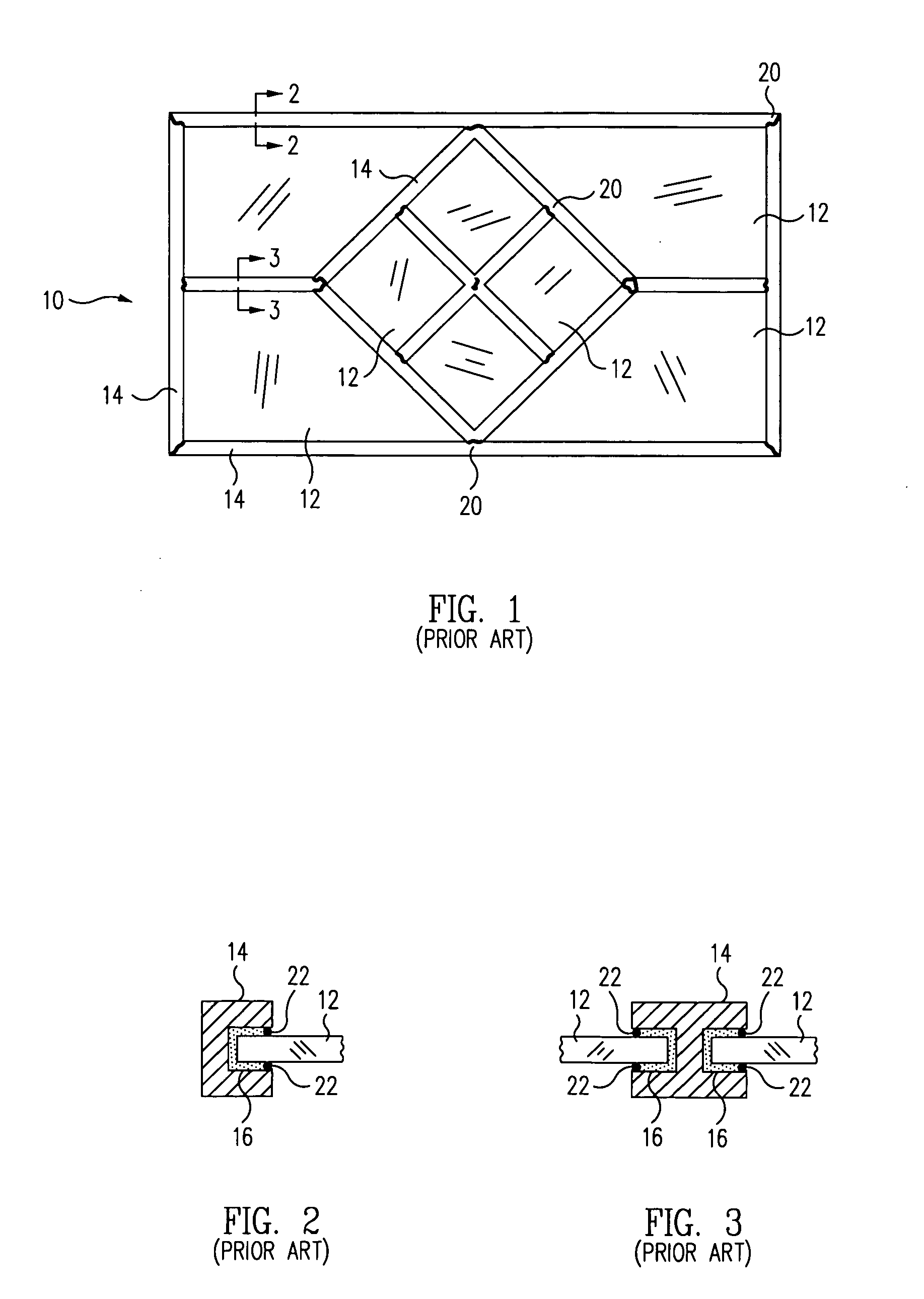Making glazed panels puttied with hot melt adhesive
a technology of hot melt adhesive and glazed panels, which is applied in the direction of ceramic layered products, coatings, transportation and packaging, etc., can solve the problem of unpleasant odor in the area of putty used
- Summary
- Abstract
- Description
- Claims
- Application Information
AI Technical Summary
Benefits of technology
Problems solved by technology
Method used
Image
Examples
Embodiment Construction
[0020]FIG. 1 is a front elevation view of an exemplary embodiment of a glazed panel 10, such as a stained glass window panel, in accordance with the prior art. As may be seen by reference to the figure, the exemplary glazed panel comprises a plurality of glass pieces, or panes 12, that may be clear, colored, leaded, or painted with translucent, colored designs that may be painted on and / or fired into the glass, and which are arranged in a flat, two-dimensional pattern or matrix and joined together at adjacent opposing edges by means of an elongated rod or bar 14 of a soft metal called a came. The came is typically made of lead or an alloy thereof and contains either one or two U-shaped channels 16 into which the peripheral margins of the glass pieces are inserted. However, the came can also be made of other pliable metal or non-metallic materials, e.g., copper or plastic.
[0021]As illustrated in the cross-sectional view of FIG. 2, a came 14 having only a single elongated channel 16 i...
PUM
| Property | Measurement | Unit |
|---|---|---|
| melting point | aaaaa | aaaaa |
| melting point | aaaaa | aaaaa |
| thickness | aaaaa | aaaaa |
Abstract
Description
Claims
Application Information
 Login to View More
Login to View More - R&D
- Intellectual Property
- Life Sciences
- Materials
- Tech Scout
- Unparalleled Data Quality
- Higher Quality Content
- 60% Fewer Hallucinations
Browse by: Latest US Patents, China's latest patents, Technical Efficacy Thesaurus, Application Domain, Technology Topic, Popular Technical Reports.
© 2025 PatSnap. All rights reserved.Legal|Privacy policy|Modern Slavery Act Transparency Statement|Sitemap|About US| Contact US: help@patsnap.com



